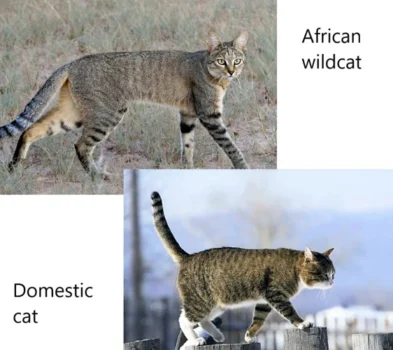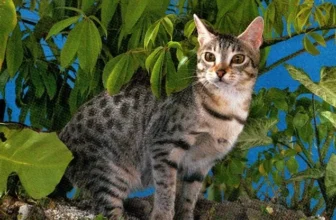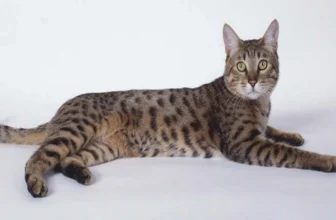Introduction
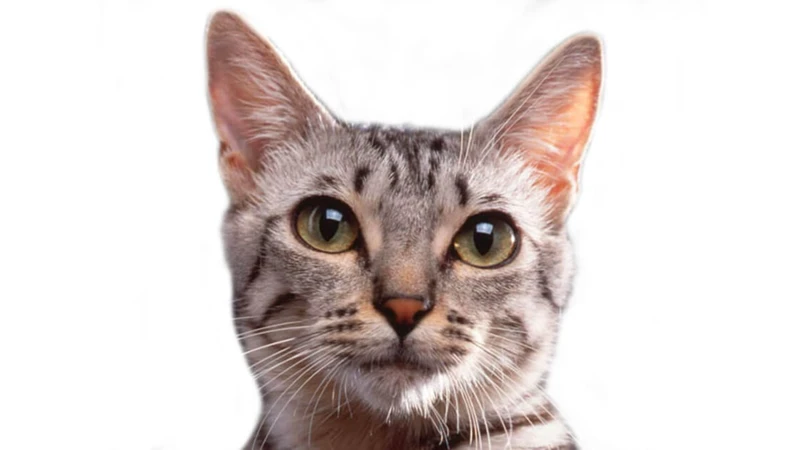
As we explore the world of felines, it’s fascinating to compare the domestic California Spangled cat to its wild counterparts. These beautiful creatures have their own unique physical and behavioral characteristics that set them apart from each other. In this article, we’ll delve into the world of California Spangled cats and wild cats, highlighting their differences in appearance, behavior, temperament, and interaction with humans. Whether you’re a cat lover, curious about feline genetics or considering adopting a California Spangled cat, read on to uncover the subtle yet significant differences between the two types of cats.
What are California Spangled Cats?
California Spangled Cats are a unique breed of cats that were created through selective breeding by American wildlife enthusiast Paul Casey in the 1980s. It was the desire of Casey to create a domestic cat breed that would look like a miniature wild big cat. Through the crossbreeding of a number of different cats, including the Siamese, British Shorthair, Abyssinian, and American Shorthair, among others, Casey was able to produce the first litter of California Spangled Cats in 1986.
These cats are known for their remarkable resemblance to wild big cats, particularly the leopard and ocelot. They have a muscular build, round eyes, and distinctive markings on their coats. The coat colors of California Spangled Cats can vary, but they typically feature spots and stripes in brown, black, gold, and white.
The breed was created to bring awareness to the plight of wild cats. They were originally marketed as an alternative to furs and were designed to encourage conservation efforts to protect different types of felines. Despite this original intention, the breed’s popularity has been slow to take off.
Although their appearance may suggest otherwise, California Spangled Cats are domesticated animals and make loving and affectionate pets. They are intelligent, curious, and playful, and can be trained to do tricks and respond to commands. Their active and attentive nature would make them a good choice for people who want an interactive pet that is loyal and affectionate.
For those who are interested in the history of California Spangled Cats, there are several resources available online. One such resource is the California Spangled Cats History page, which provides a detailed account of the breed’s creation and its evolution over the years. Another interesting read is the California Spangled Breed Creation Story, which recounts the technical process of creating this unique breed. Finally, for those who are interested in the genetics of wild cats and how they relate to California Spangled Cats, the Wild Cats Genetics and California Spangled article is a fascinating read.
What are Wild Cats?
Wild cats, also known as feral cats, are the ancestors of the domesticated cats that we keep as pets. These cats are not bred for a specific purpose and are typically not friendly towards humans. They live in the wild and have to fend for themselves, which means they have to hunt for their own food and water. Here are some characteristics that are common in wild cats:
- Size: Wild cats can vary in size from very small, such as the rusty-spotted cat, to very large, such as the Siberian tiger.
- Physical Characteristics: Wild cats are known for their sharp claws, powerful jaws, and muscular bodies. They have excellent eyesight, hearing, and sense of smell which make them efficient hunters. Their coats are usually camouflaged to blend in with their surroundings, which helps them avoid predators and prey.
- Behavior: Wild cats are solitary animals and usually only come together during mating season. They are nocturnal and spend most of their time hunting for food. They are also territorial and will defend their territory against other animals.
- Habitat: Wild cats can be found in many different types of habitats, such as deserts, jungles, forests, and grasslands. Some species are even adapted to harsh environments, such as the snow leopard living in the mountains.
- Diet: Wild cats are carnivorous and their diet consists mainly of meat, such as rodents, birds, and other small mammals. Larger species often hunt larger prey, such as antelopes and deer.
Wild cats are fascinating creatures with unique physical and behavioral characteristics that allow them to survive in the wild. While they may be different from domesticated cats in many ways, they are still a beloved part of the animal kingdom and deserve our respect and admiration.
Physical Characteristics
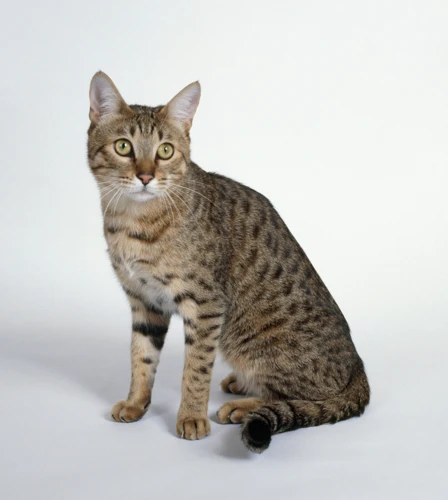
When it comes to comparing California Spangled cats to their wild counterparts, the first factor that comes to mind is their physical appearance. Both the California Spangled cat and wild cats boast unique features that set them apart from other felines. Let’s take a closer look at the distinguishing physical characteristics of each type of cat. Prepare to be amazed by the fascinating and distinctive features of both California Spangled cats and wild cats.
California Spangled Cats
California Spangled Cats have unique physical characteristics that make them stand out from other cat breeds. They are medium to large-sized cats and have a muscular and athletic build. The following table highlights some of their physical characteristics:
| Physical Characteristics | Description |
| Coat | Short and dense, may be spotted or striped. |
| Body | Medium to large-sized with long, muscular legs. |
| Head | Small-to-medium sized with high cheekbones and a strong jaw. |
| Ears | Large and pointed, wide set and tilted slightly forward. |
| Eyes | Large and almond-shaped, typically gold, green, or hazel in color. |
Their coat can come in a variety of colors, including silver, bronze, and black, and may have patterned markings such as spots or stripes. Their ears are large and pointed, with a tilted forward angle giving a wild and alert look. Their almond-shaped eyes give a look of intelligence and expressiveness.
One of the most distinctive features of California Spangled Cats is their coat. It is short, dense, and glimmers in the light, giving them a special sheen. Additionally, their coat is easy to maintain and does not require excessive grooming.
California Spangled Cats are known for their athletic and sleek appearance, which perfectly complements their lively and curious personalities.
Wild Cats
Wild cats, also known as feral cats, are a group of cats that have not been domesticated and live in the wild. There are many different species of wild cats around the world, each with unique physical and behavioral characteristics. Here are some of the most notable features of wild cats:
- Physical Characteristics: Wild cats vary greatly in size, from the smallest species (the Black-footed cat) weighing only 2-3 pounds, to the largest (the Siberian tiger) weighing up to 660 pounds. They have muscular, agile bodies that are built for hunting and stalking prey. Their fur also serves as camouflage to help them blend into their environment.
- Behavioral Characteristics: Wild cats are solitary animals and usually only come together during mating season. They are skilled hunters that typically eat small animals like rodents, birds, and reptiles. Their hunting tactics vary depending on the species, but they all rely on stealth and speed to catch their prey.
- Temperament and Personality: Wild cats are not suitable as pets and are typically aggressive towards humans. They are wild animals and should be respected as such. It is also illegal in many places to keep them as pets or capture them from the wild.
- Interaction with Humans: Wild cats and humans usually only interact in negative ways, such as when humans encroach on their natural habitats or hunt them for sport or fur. It is important to protect the natural habitats of wild cats and not interfere with their way of life.
Wild cats are fascinating animals with many unique characteristics that have allowed them to thrive in the wild for thousands of years. While they are not suitable as pets, they play an important role in many ecosystems and should be respected and protected.
Behavioral Characteristics
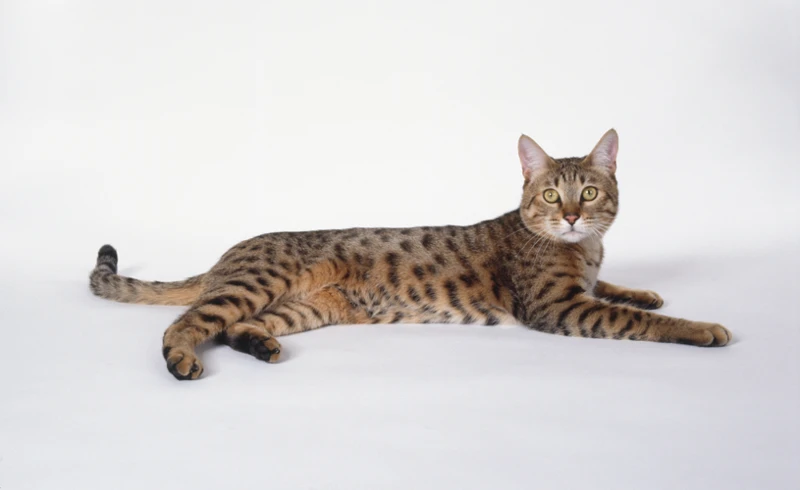
As much as the physical appearance of cats is important, their behavior can reveal a lot about their nature. By observing their natural instincts and habits, one can understand more about the cat’s personality. In this section, we’ll take a closer look at the behavioral characteristics of both California Spangled Cats and their wild counterparts. From hunting and play to social interaction and vocalization, let’s explore what sets these felines apart from one another.
California Spangled Cats
California Spangled Cats are a breed of domesticated cats that were created to resemble wild cats. They were specifically bred in the 1980s to mimic the appearance of the wild leopard cat. Here are some physical and behavioral characteristics of California Spangled Cats:
Physical Characteristics:
| Characteristics | Description |
|---|---|
| Size | Medium to Large |
| Weight | 8-15 pounds |
| Coat | Short, spotted or striped |
| Color | Bronze, gold, or silver |
| Ears | Large, with rounded tips |
| Eyes | Oval-shaped, green or gold |
Behavioral Characteristics:
California Spangled Cats are intelligent, active, and playful. They enjoy playing with toys, climbing, and exploring their surroundings. They are also very social with their owners and enjoy cuddling. They can be trained to do certain tricks, and they enjoy being challenged mentally. They can live happily in an apartment or a house, as long as they receive enough attention and stimulation.
California Spangled Cats are a unique and fun breed that make great pets for those looking for an active and interactive companion.
Wild Cats
When comparing California Spangled Cats to their wild counterparts, it’s important to note the physical and behavioral differences. Wild cats, also known as feral cats, have adapted to live and hunt in their natural environment. Here are some key physical characteristics of wild cats:
| Physical Characteristics | Description |
|---|---|
| Coat | Wild cats have a thick, fur coat that provides insulation and protection in harsh environments. |
| Size | Wild cats come in a variety of sizes. The smallest is the black-footed cat, which weighs only 2-4 pounds. The largest is the tiger, which can weigh up to 600 pounds. |
| Teeth and Claws | Wild cats have sharp teeth and retractable claws that they use for hunting and protection. |
| Senses | Wild cats have excellent senses, including sight, hearing, and smell, which they use to hunt prey. |
| Speed and Agility | Wild cats are incredibly fast and agile. Many are capable of running at speeds of up to 60 miles per hour. |
In terms of behavior, wild cats are solitary creatures, except during breeding season. They are highly territorial and will defend their territory fiercely. They are also skilled hunters and can catch a variety of prey, including rodents, birds, and even larger animals like deer.
It’s important to note that these behaviors have been developed over thousands of years of evolution, as wild cats have had to adapt to survive in their natural environments. While some of these traits are still present in domestic cats, many have been bred for specific purposes, such as companionship, and have developed different physical and behavioral characteristics as a result.
Temperament and Personality
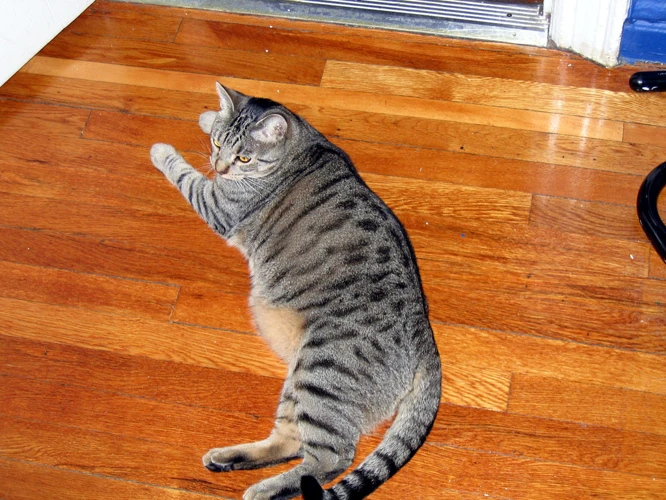
As we delve deeper into the comparison between California Spangled cats and their wild counterparts, it is important to understand their temperament and personality. The unique nature of each breed is what sets them apart and makes them special. While both cats have their distinct personalities, there are notable differences in their temperament depending on their living conditions and environment. Let’s explore these differences in more detail.
California Spangled Cats
When it comes to physical characteristics, California Spangled Cats are unique and distinct. Here are some facts about the physical characteristics of California Spangled Cats:
- Coat: California Spangled Cats have a short, thick, and silky coat. The coat has a pattern that can be spotted, striped, or marbled.
- Ears: Their ears are medium-sized, slightly angled, and pointed.
- Eyes: Their eyes are almond-shaped and can be green, gold, or hazel, depending on their coat color.
- Body: They are medium-sized cats with a long and muscular body. Their legs are slender and their paws are oval-shaped with sharp claws.
- Tail: Their tail is long, thick, and has a slight curve at the end.
- Size: They weigh between 8 to 14 pounds and are about 12 to 16 inches in height.
California Spangled Cats have a wild and exotic appearance that resembles their wild counterparts. Their unique coat pattern and muscular body make them stand out from other domestic cat breeds.
Wild Cats
Wild cats are known for their strikingly different physical and behavioral characteristics compared to domesticated cats. These feline creatures are born to survive in the wild, where they rely solely on their instincts to hunt for and capture prey. Some of the physical and behavioral characteristics of wild cats are:
| Physical Characteristics | Behavioral Characteristics |
|---|---|
| Muscular Build: Wild cats have a muscular and lean build, with long, powerful legs that allow them to run, climb, and pounce with speed and precision. | Solitary Creatures: Unlike domesticated cats, wild cats prefer to live and hunt alone. They protect their territories fiercely and have limited social interactions with other cats. |
| Sharp Claws and Teeth: Wild cats have sharp claws and teeth that help them catch and kill their prey without much difficulty. | Nocturnal Habits: Most wild cats are nocturnal, which means that they are active during the night and hunt for their prey under the cover of darkness. |
| Camouflaged Coat: The coat of a wild cat is designed to blend in with their natural environment. It also provides insulation against harsh weather conditions. | Expert Hunters: Wild cats are skilled hunters that use ambush techniques to catch their prey. They are quick, agile, and patient, and can track their prey for long distances. |
| Large Ears and Eyes: Wild cats have large ears and eyes that make them excellent hunters. They have superb hearing and eyesight, which helps them detect prey from a distance. | Mark Their Territory: Wild cats mark their territory using scent glands located on their paws, cheeks, and forehead. This helps them to communicate with other cats and avoid potential conflicts. |
While wild cats may share some similarities with domesticated cats, they are very different in both physical and behavioral characteristics. It’s important to note that wild cats are not suitable as pets, as they are fierce predators that require specialized care and habitat to thrive.
Interaction with Humans
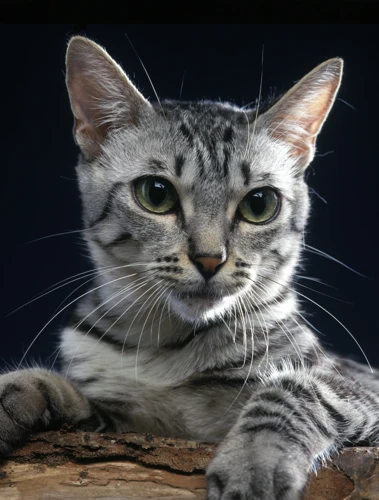
When it comes to domesticated cats, their interaction with humans can vary greatly depending on the breed. Some cats are more independent and aloof, while others are known for their affectionate and social personalities. California Spangled Cats and wild cats are no exception to this rule, as they each have unique ways of interacting with humans. In this section, we will explore the ways in which these felines interact with their human counterparts, including both similarities and differences. Let’s dive into the fascinating world of the relationship between California Spangled Cats and wild cats with humans!
California Spangled Cats
California Spangled Cats are a unique and beautiful breed with distinguishing physical characteristics. Here is a breakdown of their appearance:
| Body Type: | The California Spangled Cat has a medium-sized body and is muscular with a long neck and tail. |
| Coat: | Their coat is short, dense, and has a unique spangled pattern that resembles that of a wild leopard. |
| Color: | Their coat colors range from icy silver to warm bronze tones, with black spots or stripes on their legs and belly. |
| Eyes: | Their eyes are almond-shaped and can be green, gold, or copper in color. |
| Ears: | They have large, pointed ears that are tilted slightly forward. |
In terms of size, California Spangled Cats can weigh anywhere from 8 to 15 pounds, with males usually being larger than females. Despite their muscular build, they are quite agile and can run and climb with ease.
Their unique coat pattern and coloring make them an eye-catching breed, and their playful and affectionate personalities make them a great addition to any household willing to provide them with the love and attention they crave.
Wild Cats
Wild cats are a diverse group of felines that are found in various regions around the world. These cats are known for their strength, agility, and fierce hunting abilities. Let’s take a closer look at some of the physical and behavioral characteristics of wild cats.
Physical Characteristics
Wild cats can vary greatly in size and appearance, depending on the species. The largest wild cat is the Siberian tiger, which can weigh up to 660 pounds. In contrast, the smallest wild cat is the rusty-spotted cat, which weighs only 2-3 pounds.
One physical characteristic that many wild cats share is their pointed ears, which help them locate prey and communicate with other cats. Additionally, wild cats have powerful hind legs, which allow them to run, jump, and pounce with great speed and agility.
Behavioral Characteristics
Wild cats are solitary animals that typically hunt and live alone. They are expert predators that use a variety of hunting techniques to catch prey, including stalking, chasing, and ambushing.
One of the most fascinating behaviors of wild cats is their ability to purr. Many people associate purring with domestic cats, but wild cats purr as well. Scientists believe that purring may help wild cats communicate with one another and soothe themselves when they are feeling stressed or in pain.
Wild cats are also known for their territorial nature. They mark their territory with scent signals to let other cats know that they are the dominant one in the area. This behavior helps them avoid conflicts with other cats and ensures that they have access to food and resources.
| Physical Characteristics | Behavioral Characteristics |
|---|---|
| Pointed ears | Solitary hunters |
| Powerful hind legs | Purr to communicate and soothe themselves |
| Varied in size and appearance | Territorial nature |
| Largest wild cat: Siberian tiger (660 lbs) | |
| Smallest wild cat: rusty-spotted cat (2-3 lbs) |
Wild cats are a diverse group of felines that possess an array of physical and behavioral characteristics that make them well-adapted to their environments. Despite their differences, all wild cats share an incredible ability to survive and thrive in the wild.
Caring for a California Spangled Cat
Caring for your feline friend is an important aspect of being a responsible pet owner. California Spangled Cats are a unique and beautiful breed that require specific care in order to keep them healthy and happy. From providing a well-balanced diet to engaging in playtime activities, taking proper care of your California Spangled Cat will ensure they live a long and fulfilling life. Let’s explore some key tips and guidelines for caring for these exotic cats.
Diet and Nutrition
The diet and nutrition of California Spangled Cats should be carefully taken into consideration to ensure they are healthy and happy pets. These cats have a high metabolism and require a diet that is rich in protein and low in carbohydrates. A high-quality cat food that is specifically formulated for their needs is the best option.
When choosing a cat food, it is important to read the ingredients list and make sure that the first ingredient is a source of animal protein, such as chicken or fish, rather than fillers like corn or wheat. It is also vital to check that the food is appropriate for their age, weight, and activity level.
In addition to commercial cat food, California Spangled Cats can also benefit from a diet that includes the occasional treat or human food. However, it is crucial to avoid feeding them foods that are toxic or that can cause digestive problems, such as chocolate, onions, and garlic.
Proper hydration is also essential for the health of California Spangled Cats. Fresh, clean water should always be available to them, and they should be encouraged to drink regularly.
Providing a balanced and nutritious diet is one of the most crucial aspects of caring for a California Spangled Cat. By ensuring that they receive the proper nutrients, their overall health and well-being can be optimized.
Exercise and Play
Ensuring that your California Spangled Cat receives enough exercise and playtime is important for their physical and mental health. These cats are known for their high energy levels and love for play.
Interactive toys: Provide your cat with interactive toys such as fishing rods, feather wands, and puzzle toys. These toys will stimulate their hunting instincts and encourage them to play.
Scratching posts: Cats have a natural urge to scratch, which is important for the health of their claws and muscles. Providing a scratching post will not only satisfy this urge, but it will also prevent your cat from scratching your furniture.
Indoor and outdoor playtime: It’s important to provide both indoor and outdoor playtime for your California Spangled Cat. Indoor playtime can consist of running through tunnels, climbing cat trees, and chasing toys. Outdoor playtime can include supervised walks on a leash, exploring a fenced-in yard, or even just lounging outside in a safe, enclosed space.
Playtime with humans: These cats love to play with their humans, so take advantage of this! Play games like fetch or hide-and-seek, or simply spend time cuddling and petting your furry friend.
It’s important to note that while exercise and play are important for your cat’s health, it’s also important not to overwork them. Observe your cat’s behavior and energy levels to determine the appropriate amount of exercise and playtime for them. With the right amount of exercise and play, your California Spangled Cat will lead a happy and healthy life.
Grooming
One of the benefits of owning a California Spangled Cat over a wild cat is the lower maintenance required in terms of grooming. California Spangled Cats have a short, dense coat that does not require excessive grooming. However, it is still essential to groom them regularly to maintain their skin and coat health.
Frequency of Grooming: These felines do not require daily grooming. A weekly brushing with a slicker brush is enough to remove loose hair and debris. Monthly baths can help to keep their coat shiny.
Grooming Process: The grooming process for a California Spangled Cat is relatively simple. Begin by using a slicker brush to remove any loose hair and debris. The brush also helps to distribute natural oils through their coat, which keeps it moisturized. For periodic baths, a mild shampoo specifically formulated for cats is recommended. It is essential to rinse the shampoo thoroughly to prevent skin irritation. After the bath, dry them off with a towel and brush their coat gently again.
Grooming Tools: The grooming tools required for a California Spangled Cat are a slicker brush, a comb, and a pair of scissors. Use scissors to trim the hair around their eyes, ears and paws to prevent matting.
Grooming Services: While California Spangled Cats are low maintenance, periodic visits to professional grooming services such as a cat salon are essential. A professional groomer will trim their nails, clean their ears, and brush their coat. It also provides an opportunity to detect any skin or coat issues that the owner may have missed.
The California Spangled Cat is a low-maintenance breed in terms of grooming. A weekly brushing and a periodic bath are all it takes to keep their coat shiny and healthy. It is essential to use the right grooming tools and take periodic visits to the professionals to keep them well-groomed.
Conclusion
After comparing California Spangled Cats to their wild counterparts, it’s clear that while there may be physical similarities, they are vastly different creatures.
Physical Characteristics: California Spangled Cats may resemble their wild counterparts in terms of their coat pattern and eye shape, but their size and overall appearance is significantly different. Wild cats are typically larger and more muscular, with a thicker coat to protect them from the elements. On the other hand, California Spangled Cats are smaller and have a more slender build, making them more agile and able to navigate indoor spaces more easily.
Behavioral Characteristics: Similarly, the behavior of wild cats and domesticated California Spangled Cats couldn’t be more different. Wild cats are solitary creatures that prefer to avoid human contact, while California Spangled Cats are known to be affectionate and friendly with their owners. Additionally, wild cats are natural hunters and may show a stronger prey drive, whereas California Spangled Cats have been bred for generations to have a more docile and playful disposition.
Temperament and Personality: When it comes to personality, California Spangled Cats are known for their intelligence and curiosity, as well as their ability to adapt easily to new situations. Wild cats, on the other hand, have a more instinctual and survival-based approach to life. This makes it harder to socialize with wild cats and to keep them as pets.
Interaction with Humans: California Spangled Cats are known for their love of human company, while wild cats prefer to keep their distance. Interacting with wild cats, even those in captivity, can be dangerous and requires specialized knowledge and skills. Domesticated California Spangled Cats, on the other hand, thrive on human attention and crave affection and play.
Caring for a California Spangled Cat: Caring for a California Spangled Cat involves providing them with a healthy diet, plenty of opportunities for exercise and play, and regular grooming. It’s important to choose a high-quality cat food that meets their nutritional needs and to provide them with toys, scratching posts, and other forms of stimulation to keep them active and engaged.
In conclusion, while California Spangled Cats may share some physical characteristics with wild cats, they are vastly different creatures with their own unique personalities and needs. If you’re considering adding a cat to your family, it’s important to do your research to ensure that you choose the right breed for your lifestyle and circumstances.
Frequently Asked Questions
Can California Spangled cats be kept as domestic pets?
Yes, they were bred specifically to serve as domestic pets.
Do Wild Cats make good pets?
Generally, wild cats do not make good pets. They are not domesticated animals and are usually dangerous to humans.
Are California Spangled Cats good with children?
Yes, they are friendly and affectionate towards children. However, it’s always important to supervise interactions between children and pets.
What types of Wild Cats are there?
There are over 30 types of wild cats, including lions, tigers, cheetahs, leopards, and jaguars.
What is the average lifespan of a California Spangled Cat?
The average lifespan of a California Spangled Cat is around 12-14 years.
What is the average lifespan of a Wild Cat?
The average lifespan of a wild cat in the wild varies according to the species, but it is generally MUCH shorter than domesticated cats.
Do California Spangled Cats shed a lot?
They do shed, but not as much as some other breeds of cats. Regular grooming can help minimize shedding.
What types of food do California Spangled Cats need?
California Spangled cats require a diet rich in protein, such as high-quality meat-based cat food.
Can Wild Cats be domesticated?
Technically, yes, but it takes many generations of domestication and selective breeding to create a new domesticated species.
Are California Spangled Cats hypoallergenic?
No, they are not hypoallergenic. They can still cause an allergic reaction in those sensitive to cat allergens.

